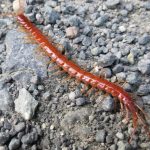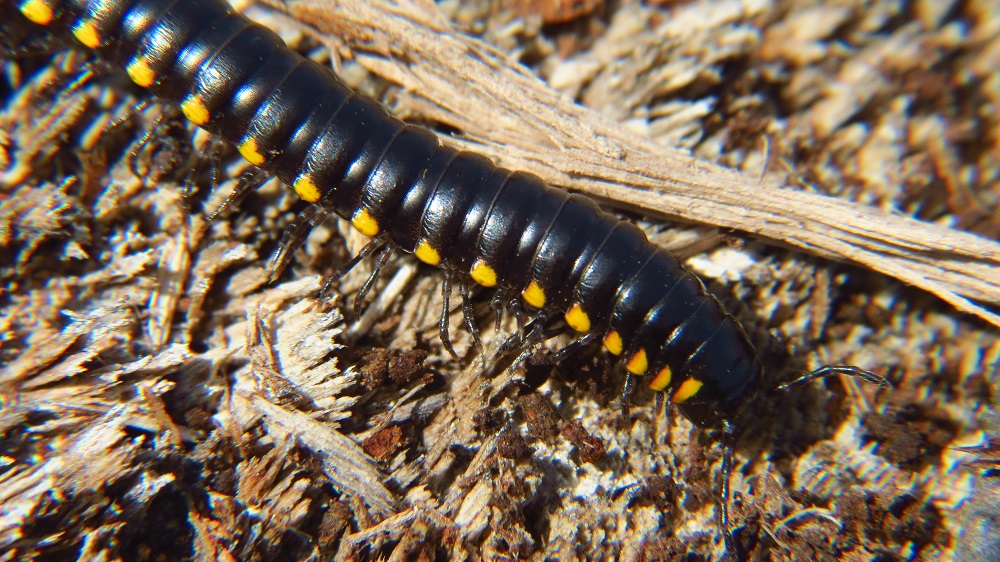Centipedes and millipedes can be found all over Vancouver Island. Centipedes can easily be distinguished from millipedes by counting the number of pairs of legs arising from most body segments, millipedes have two pairs, while centipedes bear one pair per segment, with the first pair of legs being modified into fangs.
Common Centipede
 The common centipede that lives in the Pacific Northwest is a brownish red with long antennae at the front and a pair of long legs at the back that reach out almost as far as the antennae. The Common centipede can crawl backward almost as easily as it can crawl forward. Read More….
The common centipede that lives in the Pacific Northwest is a brownish red with long antennae at the front and a pair of long legs at the back that reach out almost as far as the antennae. The Common centipede can crawl backward almost as easily as it can crawl forward. Read More….
Harpaphe Haydeniana Millipede
 Harpaphe Haydeniana Millipedes (almond-scented millipedes) are a common sight in the Pacific Northwest, They stand out with their bright yellow spots running the length of their black body. These spots are a warning to predators that this millipede is poisonous. Read More….
Harpaphe Haydeniana Millipedes (almond-scented millipedes) are a common sight in the Pacific Northwest, They stand out with their bright yellow spots running the length of their black body. These spots are a warning to predators that this millipede is poisonous. Read More….
Stone Centipedes
 They have a flattened, segmented body, long antennas, and many legs. The centipede’s body is divided into two parts, the head, and a segmented trunk, and they breathe through holes in their body. Centipedes have a hard exoskeleton that protects their soft internal organs. Read More….
They have a flattened, segmented body, long antennas, and many legs. The centipede’s body is divided into two parts, the head, and a segmented trunk, and they breathe through holes in their body. Centipedes have a hard exoskeleton that protects their soft internal organs. Read More….

They are generally flattened and have a pair of well-developed antennae on the head. Some centipedes, such as the house centipede have long legs and are capable of running rapidly.
The largest centipedes may grow to be about 15 cm long. Millipede bodies are rounded or somewhat flattened. Legs are short and movement is slow, with the movement of legs appearing wave-like. Most species are less than 4 cm long.
Centipedes and millipedes spend the winter as adults in protected habitats and become active in the spring. During the warmer months, females lay eggs in the soil and cover them with a sticky substance, although some species give birth to living young.
Immature stages (larvae) hatching from eggs several days later are similar to adults but smaller, having fewer leg-bearing body segments. Additional leg-bearing segments are produced with each moult. Millipedes develop through about seven stages in 21 to 25 weeks. Some centipedes are known to live to 6 years.
Centipedes and millipedes prefer to live in moist habitats and during the day hide underneath rocks, logs, and other objects in contact with the ground. They are active at night. Centipedes feed on insects and spiders. They kill by grasping prey with their powerful fangs and injecting venom. The fangs are located on the body segment just below the head. Millipedes feed on decomposing organic matter, but will occasionally damage seedling plants by feeding on leaves, stems, and roots.

what is this bug? anyone know? Vancouver Island
hey dan, reset my attachment settings, you now can post large photos, please resent the photo